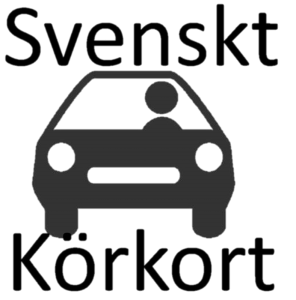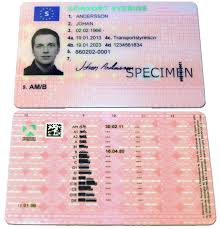15 Top Twitter Accounts To Find Out More About Traffic Authority Custo…
페이지 정보
작성자 Barney 댓글 0건 조회 2회 작성일 25-04-19 10:51필드값 출력
본문
 Traffic Authority Client Service Evaluation
Traffic Authority Client Service EvaluationTraffic Authority offers high quality traffic that transforms into leads and sales. They likewise offer training and tools that help you make cash online. They are backed by a few of the most significant names in online marketing, consisting of Doug Wellens and Chad Stalvey.
 They offer traffic packages of differing sizes, from small to big. Each package includes a particular rate per click. However, these prices are generally lower than the expense of conventional solo advertisements.
They offer traffic packages of differing sizes, from small to big. Each package includes a particular rate per click. However, these prices are generally lower than the expense of conventional solo advertisements.Client service
The Traffic Authority site is easy to browse. You can develop a free account and then search the offered traffic bundles. The business likewise provides numerous tools to help you optimize your service. These functions are developed to improve your lead generation and sales.
The Traffic Authority group is dedicated to customer care and offers a variety of ways to assist you succeed. They put every traffic bundle through a screening phase initially, and they continue to monitor their traffic quality. In addition, they offer a cash back guarantee on all orders. They also offer you total control over your order, so you can stop briefly or change your link whenever you wish to. This is a huge benefit over other traffic suppliers. Greg Chambers and his team know that customer assistance is important to your success as an entrepreneur. They are dedicated to offering you with quality traffic and the best possible experience.
Support
Traffic Authority is a website that supplies entrepreneur with a chance to acquire quality traffic. The website uses a range of different packages, and the procedure of creating a complimentary account or purchasing traffic is simple and straightforward. The company behind the site is Streamlined Marketing Systems, and it is based in Florida.
Greg Chambers and his group have actually striven to make certain that customer functionality was a top priority when designing the website. The website is easy to browse, and users can produce a free account or purchase traffic within minutes. Furthermore, the business uses discounts as you purchase larger traffic packages.
Another fantastic feature of traffic authority is their capability to supply clients with real-time information on their campaigns. By doing this, they can see how well their marketing is working and make changes as required. This is a lot more practical than merely sending in a support ticket, and it enables them to increase their leads and sales with just a couple of basic tweaks. The website likewise includes a variety of various traffic plans that are best for direct marketing, affiliate and multi level marketing, or any work from home business.
Training
If you are looking for traffic to your site, you might wish to consider utilizing a business called Traffic Authority. This site provides high-quality traffic to sites at a reasonable price. It likewise offers access to sales funnels and lead capture pages. It can assist you to increase your conversion rate and sales. Nevertheless, it is necessary to comprehend how this traffic works before choosing whether it is best for you.
Greg Chambers, the owner of Traffic Authority, has a track record for looking after his clients and offering incredible service. His group is constantly working to enhance the quality of their traffic, and he has actually made it simple for his customers to use. In fact, he has actually succeeded in assisting his affiliates offer more than $15 million worth of quality traffic and traffic conversion tools!
In addition to their high-quality traffic, the business likewise offers a range of training resources. These include webinars and virtual training for specialists. In this manner, they can continue to access the very same training product without having to spend time and cash on travel. In addition, they can keep up with the current developments in the field of kid security.
Additionally, the company's training program teaches very first responders about Traffic Incident Management (TIM). This is a thorough, multidisciplinary process for reacting to traffic events and bilder på trafikverket förarprov borås (mouse click the up coming post) restoring traffic circulation as rapidly and securely as possible. It is essential for guaranteeing the safety of emergency situation responders and trafikverket ta körkortsfoto trafikverket örebro förnya körkort trafikverket norrköping förnya körkort, Related Home Page, crash victims, as well as decreasing the duration and impact of traffic events.
Unlike MLM programs, which are typically pyramid-like, Traffic Authority is an online platform that allows users to make money by promoting its traffic and tools. The site is simple to navigate, and members can produce a complimentary account before purchasing traffic plans. It is likewise easy to find discounts as you buy larger traffic plans. The site likewise provides premium traffic, which is crucial to creating leads and sales.
Rates
Traffic Authority is a multi-level marketing (MLM) company that sells premium top-tier website traffic. The company's objective is to assist small organizations grow their online existence and generate more sales. The program offers both paid and affiliate traffic. The business likewise offers a range of other tools, including lead capture pages, funnels, and rotators. It is an excellent method to drive more traffic to your site, and it can be used for any specific niche or industry.
The rate of the plans differs depending on what kind of traffic you are trying to find and just how much cash you can spend. The fundamental package expenses $220 and consists of in between 170-- 190 clicks. The bronze bundle is more costly and includes 240-380 clicks. However, the cost of the packages is substantially lower than that of other PPC marketing platforms.
Although some individuals claim that Traffic Authority is a rip-off, it has genuine services and does produce results. For example, they utilize just quality traffic that has actually been validated to be of high conversion rates. They put all of their traffic through a strenuous screening procedure before they send it to clients and customers. In addition, they continue monitoring their traffic every day to make sure that it is high-quality.
In addition to offering premium website traffic, Traffic Authority has a financially rewarding affiliate program that pays commission on sales of its traffic packages. This indicates that you can make approximately 40% of each sale, making it a great method to make cash online. In addition, the company uses a variety of other tools for enhancing traffic and increasing sales.
The business is based in Florida and has actually been in service for more than 3 years. The business is led by Greg Chambers, who has experience in the MLM and affiliate marketing industries. Utilizing an unique method, the company has actually managed to create over $15 million in both traffic and sales. It has an outstanding track record in the affiliate marketing market and is a popular option amongst web marketers. Furthermore, the company offers some of the very best traffic generation approaches that have actually proven to work for online services.



